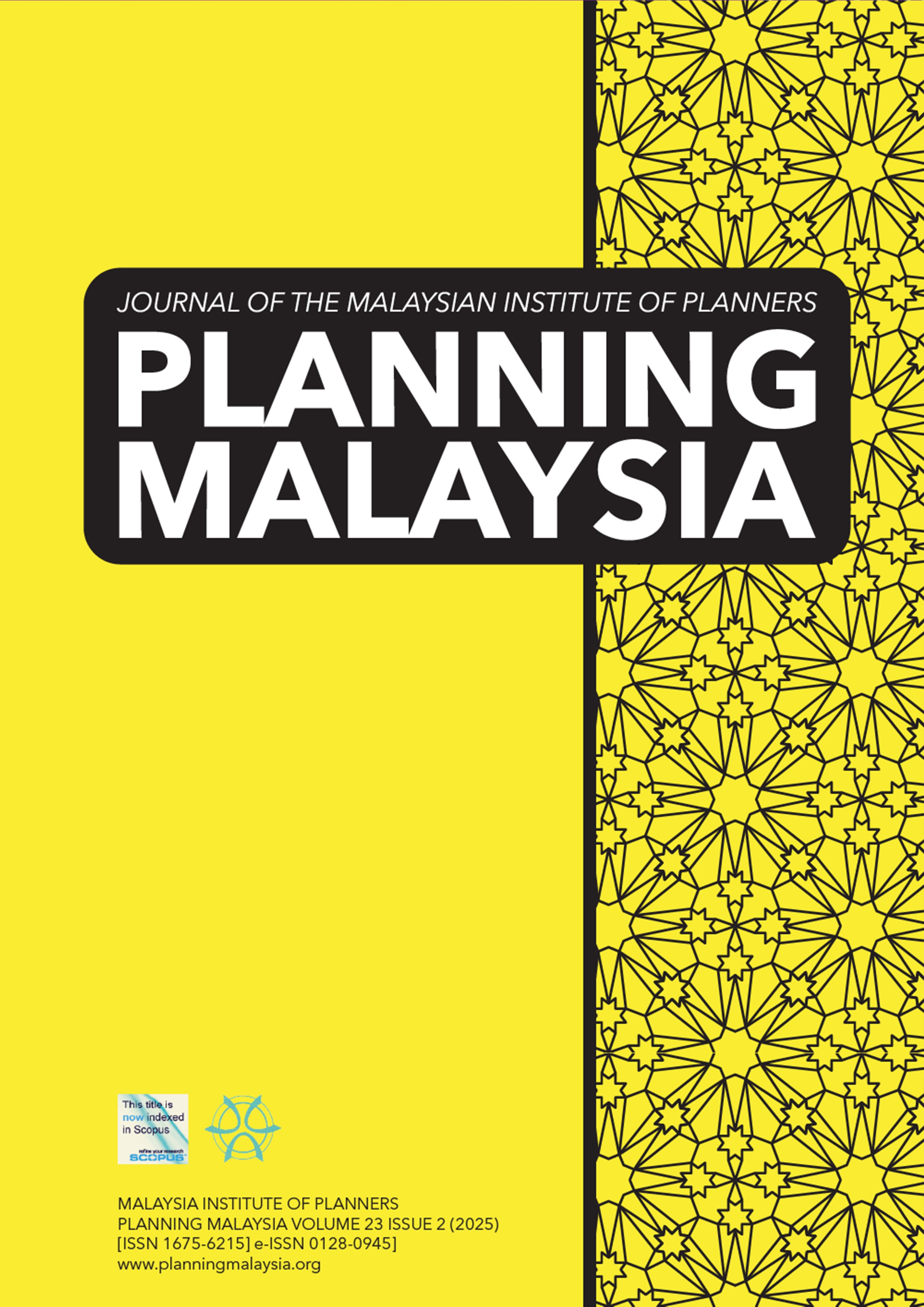THE AUTHENTICITY OF INTANGIBLE CULTURAL HERITAGE MODEL BASED ON TOURISM TERMINATE INTENTION
DOI:
https://doi.org/10.21837/pm.v23i36.1723Keywords:
Authenticity, Intangible Cultural Heritage, Landscape Perception, TourismAbstract
Recent studies have extensively examined the motivation of tourism intention related to the authenticity of intangible cultural heritage (ICH), but however, the factors influencing tourism termination intention are still poorly understood. This study proposes an integrated research model of the ICH tourism termination intention. The model is constructed based on the theoretical perspectives of the (Expectation Confirmation Theory) ECT and (Landscape Perception Theory) LPT. The objectives of this study are to investigate the factors and mechanisms influencing the termination of tourism intention. This study adopted the quantitative method and analysed 311 questionnaires using structural equation modelling by making assumptions about the relationships among the constituent factors and examining the influence of tourists' anticipatory motives and landscape perception factors. The findings not only elucidate the impact of low expectation confirmation on tourists' intentions to terminate their visits but also offer valuable insights into potential negative phenomena in intangible cultural heritage tourism. This study highlights the crucial role of perceived authenticity in shaping tourists' decision-making processes and establishes a new theoretical framework for the preservation and management of intangible cultural heritage.
Downloads
References
Azinuddin, M., Mat Som, A. P., Mohd Saufi, S. A., Zarhari, N. A. A., Wan Mohd Amin, W. A. A., & Mior Shariffuddin, N. S. (2022). Investigating overtourism impacts, perceived man-made risk and tourist revisit intention. Planning Malaysia, 20(22). https://doi.org/10.21837/pm.v20i22.1142 DOI: https://doi.org/10.21837/pm.v20i22.1142
Basil Chibuike, N., Ireneus Chukwudi, N., & Rahim Ajao, G. (2021). Antecedents of Tourists Behavioural Intentions, Perspectives of Expectations Confirmation Model: A Study of Select Tourism Cites in South-East Nigeria. International Journal of Education, Culture and Society, 6(5), 176. https://doi.org/10.11648/j.ijecs.20210605.13 DOI: https://doi.org/10.11648/j.ijecs.20210605.13
Caballero, G. V. (2017). Crossing Boundaries: Linking Intangible Heritage, Cultural Landscapes and Identity.
Chen, D. (2023). How Visitors Perceive Heritage Value—A Quantitative Study on Visitors’ Perceived Value and Satisfaction of Architectural Heritage through SEM. Sustainability, 15(11), 9002. https://doi.org/10.3390/su15119002 DOI: https://doi.org/10.3390/su15119002
Chi, X., Lee, S. K., Ahn, Y., & Kiatkawsin, K. (2020). Tourist-Perceived Quality and Loyalty Intentions towards Rural Tourism in China. Sustainability, 12(9), 3614. https://doi.org/10.3390/su12093614 DOI: https://doi.org/10.3390/su12093614
García-Esparza, J. A. (2016). Re-thinking the validity of the past. Deconstructing what authenticity and integrity mean to the fruition of cultural heritage. VITRUVIO - International Journal of Architectural Technology and Sustainability, 1(1), 21. https://doi.org/10.4995/vitruvio-ijats.2016.4595 DOI: https://doi.org/10.4995/vitruvio-ijats.2016.4595
Gobster, P. H., Palmer, J. F., & Crystal, J. H. (2003). Ervin H. Zube (1931-2002): The Significance and Impact of His Contributions to Environment-Behavior Studies. Environment and Behavior, 35(2), 165–186. https://doi.org/10.1177/0013916502250131 DOI: https://doi.org/10.1177/0013916502250131
Hair, J. F., Howard, M. C., & Nitzl, C. (2020). Assessing measurement model quality in PLS-SEM using confirmatory composite analysis. Journal of Business Research, 109, 101–110. https://doi.org/10.1016/j.jbusres.2019.11.069 DOI: https://doi.org/10.1016/j.jbusres.2019.11.069
Khanom, S., Moyle, B., Scott, N., & Kennelly, M. (2019). Host–guest authentication of intangible cultural heritage: A literature review and conceptual model. Journal of Heritage Tourism, 14(5–6), 396–408. https://doi.org/10.1080/1743873X.2019.1574804 DOI: https://doi.org/10.1080/1743873X.2019.1574804
Lei, Y., Li, X., & Tsai, S.-B. (2022). Processing and Optimizing Industrial Structure Adjustment of Intangible Cultural Heritage by Big Data Technology in the Internet Era. Scientific Programming, 2022. https://doi.org/10.1155/2022/4910456 DOI: https://doi.org/10.1155/2022/4910456
Madkhali, H., Alshuqaiqi, A., & Som, A. P. M. (2024). THE MEDIATING EFFECT OF PLACE ATTACHMENT ON INTENTION TO VISIT AMONG VISITORS TO JAZAN PROVINCE, SAUDI ARABIA. PLANNING MALAYSIA, 2024. DOI: https://doi.org/10.21837/pm.v22i30.1424
Mt Akhir, N., Md Sakip, S. R., Abbas, M. Y., & Othman, N. (2021). ANALYZING THE CRITERIA OF PLANTING DESIGN FOR VISUAL LANDSCAPE QUALITY IN CAMPUS. PLANNING MALAYSIA, 19. https://doi.org/10.21837/pm.v19i16.950 DOI: https://doi.org/10.21837/pm.v19i16.950
Park, E., Choi, B.-K., & Lee, T. J. (2019). The role and dimensions of authenticity in heritage tourism. Tourism Management, 74, 99–109. https://doi.org/10.1016/j.tourman.2019.03.001 DOI: https://doi.org/10.1016/j.tourman.2019.03.001
Shi, Y., Shamsul Harumain, Y. A., & Mohidin, H. H. B. (2023). EXPLORING GENDERED WALKING BEHAVIOR AND ENVIRONMENT PERCEPTION IN HERITAGE CITY: THE CASE OF GULANGYU, CHINA. PLANNING MALAYSIA, 21. https://doi.org/10.21837/pm.v21i30.1406 DOI: https://doi.org/10.21837/pm.v21i30.1406
Tan, E., & Teoh, S. (2019). A nostalgic Peranakan journey in Melaka: Duo-ethnographic conversations between a Nyonya and Baba. Tourism Management Perspectives, 32, 100570. https://doi.org/10.1016/j.tmp.2019.100570 DOI: https://doi.org/10.1016/j.tmp.2019.100570
Yuan, L., & Marzuki, A. (2024). What keeps historical theme park visitors coming? Research based on expectation confirmation theory. Frontiers in Psychology, 15. https://doi.org/10.3389/fpsyg.2024.1293638 DOI: https://doi.org/10.3389/fpsyg.2024.1293638
Zhuang, Q., Hussein, M. K., Mohd Ariffin, N. F., Mohd. Yunos, M. Y., & Chen, S. (2022). Rural landscape characterization from the perspective of the tourist using online reviews: A case study of Yayou Gou Village in Shandong, China. Frontiers in Environmental Science, 10. https://doi.org/10.3389/fenvs.2022.915110 DOI: https://doi.org/10.3389/fenvs.2022.915110
Downloads
Published
How to Cite
Issue
Section
License

This work is licensed under a Creative Commons Attribution-NonCommercial-NoDerivatives 3.0 Unported License.
Copyright & Creative Commons Licence
eISSN: 0128-0945 © Year. The Authors. Published for Malaysia Institute of Planners. This is an open-access article under the CC BY-NC-ND license.
The authors hold the copyright without restrictions and also retain publishing rights without restrictions.


